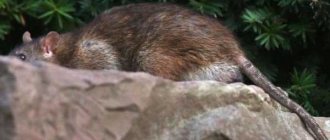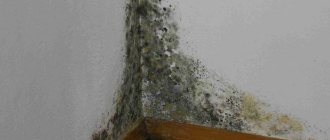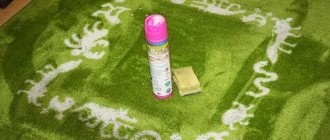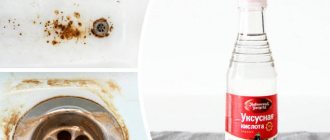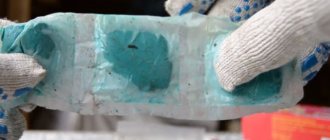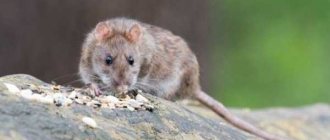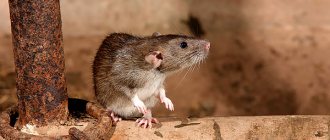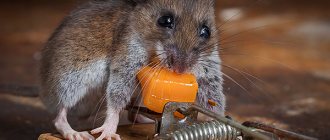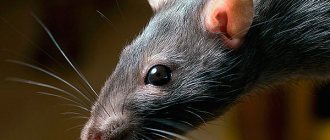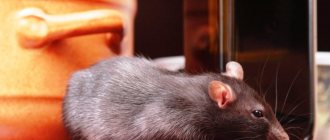The appearance of a tailed house is not only an unpleasant phenomenon, but also dangerous. Therefore, as soon as the first pests were noticed, you need to start a war with them. Rat Death poison is effective in killing rodents. It is designed for large-scale pest control in apartments and private sectors. The poisonous drug is produced by Dr Tezza, an Italian company that has offices in other countries.
The appearance of rats in the house is a big problem, so you need to resort to a number of methods to exterminate them
Composition of the drug
The drug is available in two types - Rat Death 1 and 2. They differ in the active ingredient. Composition No. 1 includes brodifacoum, and No. 2 contains bromadiolone.
Even a small dose of brodifacoum is enough to poison the pest, since the component is very toxic. The action of bromadiolone is much slower, but its results are impressive. The first drug has a blue-green color, the second is available in the form of meat pieces.
This video talks about ultrasonic rat repeller:
Additional components of the poisonous drug are:
- nutritional supplements;
- Wheat flour;
- flavorings;
- sunflower oil.
The poison does not reveal itself at all. The tailed animals eat the treat with appetite. The product does not begin to act immediately, so the rats do not see anything suspicious in the bait. You need to constantly add poison and wait for the result.
TOP 6 most effective remedies
The range of toxic substances is represented by means with different effects. Second generation anticoagulant drugs are considered the safest and most effective. A review and comparison of popular products helps you choose the best and solve your pest problem.
Rat Death #1
The poison is produced under the brand name of the Italian company Dr. Tezza. Manufacturer: Ukrainian.
There is no need to open the poison packages. They are laid out in places where rodents move, near burrows. There is 1 packet per mouse, 2-3 per rat. The distance between baits should be from 2 to 15 m.
Precautionary measures:
- the poison must be placed in closed containers where other animals have no access (plastic bottles, containers with a hole in the form of a hole);
- work with gloves.
You need to add more as you eat.
The substance blocks the production of vitamin K, which is responsible for blood clotting. The rodent dies from extensive bleeding.
Efa
The rodenticide is produced by a Russian company.
Containers with bulk poison and briquettes are placed near burrows, crevices, and paths of rodents. As the bait disappears, new portions are added. The distance between points with poison is 4-5 for rats, 2-3 for mice.
Security measures:
- it is necessary to lay out the poison in protective clothing;
- upon completion of work, wash your hands with running water;
- Places where the poison is located must be protected from animals and children.
Items that were used as auxiliary tools (tweezers, mats, gloves) should be burned or buried.
The drug has a skin-resorptive effect (absorbed through the dermis into the blood).
Zookoumarin Neo
Combined drug of domestic origin.
Mode of application:
- Portions of the poison are laid out at the entrance to the burrows or poured into the cracks.
- Consumption for mice is 20-50 g, for rats 50-100 g.
- You need to check the amount you eat after 1-2 days.
If the bait has not been touched for 7 days, you need to change the place. The drug can be used for prevention.
Precautionary measures:
- the toxic substance must be spread out with a special tool or spoon;
- Protect your hands with latex gloves;
- store and use rodenticide out of reach of people and animals.
After finishing, wash your hands with soap, treat the available products with a 5% soda solution or burn them.
Storm
The poison is produced by the English concern BASF. The drug is produced in the form of granules and bright blue wax briquettes.
The second generation anticoagulant has a concentration of 0.005%. When eaten, it slowly accumulates in the body. The absence of smell and taste does not cause a feeling of danger in the rodent, so they try the bait many times.
Usage algorithm:
- Briquettes and granules are placed near burrows, along the path of movement of individuals, near drinking sources, under the floor, in the walls.
- The bait is laid out at intervals of 5-15 m for rats, 2 m for mice.
- You need to add a new portion of poison after 1-2 days.
You can clear a building of rodents using Storm in 3 weeks.
Security measures:
- you need to wear gloves when laying out the poison;
- in case of contact with the drug, wash the painted area with soap and water;
- Places of placement should be inaccessible to children and animals.
The use of special containers for bait will block access to the poison to non-target representatives of the fauna.
Goliath
The manufacturer of the poison is a German company.
The product is intended for professional use. Available in containers from 1 to 10 kg. It is used over large areas, in places where representatives of the mouse order gather.
By acting on the blood clotting mechanism (suppressing the regeneration of vitamin K), the poison causes internal and external bleeding.
The paste is laid out near holes, cracks, and in places where rodents appear. The amount of the drug varies from 1 teaspoon (for mice) to 1 tbsp. spoons (for rats). The bait should be added according to the degree of consumption.
Precautionary measures:
- you need to wear protective clothing when working with a highly toxic drug;
- In case of contact with skin, wash off with plenty of water and detergents;
- Place the tools used to spread the paste out of reach.
Place the poison out of the reach of children and pets.
Fumiphos
An inorganic poison based on a heavy metal (aluminum phosphide) causes poisoning by vapors of the substance.
The toxic chemical affects the respiratory and nervous systems, causing suffocation and paralysis. The death of rodents occurs in 100% of cases.
The toxicity of the drug does not allow its use at home. The poison is used for agricultural purposes. They carry out deratization of grain in storage facilities.
Release form
The effectiveness of the drug mainly depends on the form of release. The gel-like mixture in the form of a briquette is packed into a filter and placed in film. The shelf life of such a package is 3 years.
Read on topic:
Sulfur ointment: instructions for use, price and reviews
15.10.2019
Get Total - a modern means for effective control of insects
25.06.2019
Getting rid of cockroaches and bedbugs with Xulat Micro
25.06.2019
Xulat C25 - a powerful modern remedy for cockroaches and bedbugs
25.06.2019
The “Rat Death” poison has a gel structure and a long shelf life
The gel base of the drug has its advantages. It does not allow the poison to lose its properties even when exposed to sunlight and high temperatures. An open briquette can be used within 14 days.
The rat poison Rat Death is not difficult to purchase in any store; its cost is quite reasonable. The package consists of 8 briquettes of 100 g or 16 of 200 g.
Due to its active composition, as well as the release form, which allows the poison to not lose its properties for a long time, the poison is in demand compared to its analogues.
Types of poisons
Rodents can be poisoned with organic and inorganic substances. The difference lies in the main component, which was obtained from natural elements or chemically.
Blood anticoagulants
Poisons are classified as chronic drugs. Characterized by a long latent period. The composition of the drugs contains substances that block blood clotting.
How does the poison affect mice?
- poisons accumulate in the body and lead to pathological processes;
- after eating rodenticides, the death of the animal occurs within 3-10 days from internal bleeding.
The remedies are effective due to their delayed action (individuals do not feel danger from the bait, eat it themselves and bring other individuals).
Advantages of anticoagulants:
- small doses of 0.00025-0.005% are used (safe for animals if accidentally ingested);
- do not cause a protective reaction in rodents;
- There are different types (food baits, foams, sticky coating).
Rodenticides can be used for preventative purposes.
Important! Residues of poisons and carcasses of dead animals should not be thrown into trash containers. Disposal is carried out by burying (to a depth of 0.5 m) or burning.
Rat Death #1
The toxic component is brodifacoum. Food additives (sunflower oil, flour, flavorings) mask the smell of poison. The release form is square film bags filled with a green-blue plastic mass.
Brodifacoum does not have volatile properties. The substance is dangerous only if it enters the body of an individual.
Lethal dose: for a mouse - 0.24 g, for a rat - 2 g.
Goliath
The active ingredient is flocumafen, a coumarin derivative. Has selective toxicity (mice, rats). Without a pronounced smell or taste, therefore it is easily masked by food additives and flavorings.
Lethal dose (LD): 0.25 mg/kg body weight for rats, 0.8 mg for mice.
The second generation rodenticide is dangerous for dogs (LD 0.075-0.25 mg/kg), does not affect aquatic life, and is low toxic to birds.
Storm
The active component of all forms of poison is flocumafen. Additional components of baits are grains, flavors, wax (for briquettes). The water-soluble dye Bitrex in the composition is needed as a protective measure. When it comes into contact with skin or mucous surfaces, it leaves a blue stain.
Lethal dose: mice - 0.8 mg, rats - 0.25 mg.
Rat Death #2
The drug is produced by Ukrainian companies under the Italian brand Dr. Tezza. Release form: filter bags with a poisonous red paste (raw meat).
The active ingredient is bromadiolone, a second generation anticoagulant. Accumulates in the liver, slows down the production of prothrombin. Additional components - flavoring and aromatic additives. To prevent pets from swallowing the bait, bitterness is added to the poison.
Usage algorithm:
- Filter bags are laid out in places where rodents live, along the route of movement. Dose calculation - 1 pc. for mice, 2-3 for rats.
- For bait, use closed containers where only rodents can enter.
- Take the bags with tweezers or hands wearing rubber gloves.
Bromadiolone can penetrate the skin. Therefore, if it gets on open areas of the body, they must be washed with running water and soap.
Lethal dosages (mg/kg): rats - 0.49-1.125, mice - 1.75, dogs - 8.1-10, cats - 25.
Efa
Active ingredient: ethylphenacin 0.015% (briquettes), bromadiolone 0.005% (grain baits, gel).
The principle of action of the drug is to damage the walls of blood vessels. Available in the form of grain coated with a poisonous component and paraffin briquettes. Excipients: cereal, sunflower oil, flavorings.
Lethal dose of ethylphenacin: for mice - 5000 mg/kg, for rats - 940 mg/kg. For domestic animals and birds, the toxic effect is less pronounced. The lethal portion for them is 7-70 g/kg.
Zookoumarin Neo
The product is available in the form of purple grains or cereals, pink granules. An aromatic additive is used to attract rodents. The bitter taste should repel non-target animals and people.
Active ingredients: zoocoumarin 0.005% (first generation), bromadiolone 0.005%. The biological effectiveness of the product is 100% for rats (7-11 days), 80% for mice (8-22 days).
Lethal dosage for rats is 4.650 mg/kg.
Baits with an anticoagulant effect have proven themselves well. They can be used in everyday life, in enterprises, in healthcare institutions, and catering.
Another effective remedy is the combination drug “Ratobor”. It also gets rid of water rats.
The products are ready for use without additional processing. The substances do not have volatile properties and have a toxic effect after entering the stomach.
Other organic poisons
Poisons that cause suffocation help kill rodents.
Krysid is a drug based on alpha-naphthylthiourea (1%). The substance quickly reduces the level of hemoglobin in the blood, which leads to respiratory failure and death of the rodent. It is an acute poison with selective toxicity.
Lethal outcome occurs at a dosage of 14.1 mg for rats, 400 mg for mice. When absorbed through the skin of a rat, the death of the individual occurs at an amount of 50 mg/kg.
Available in the form of a gel or odorless grain bait. Biological effectiveness is 70% death of rats.
Application procedure:
- Rodents are fed for 3-7 days (without using poisons).
- Then the bait is changed to Rasid (50-100 g).
- After 3-4 days, the remaining substance is removed.
The drug must be alternated with other poisons against representatives of the mouse family. The effectiveness of the substance decreases with frequent use. Pests develop resistance to it.
The biological agent Bactorodencid has shown good effectiveness in the fight against rodents. The active substance is pathogenic bacteria (Salmonella enteritidis, var. Issatschenko). They cause diseases of the digestive system, which lead to the death of the individual after 5-7 days. Sick animals infect the entire colony.
Available in the form of grain bait.
Mode of application:
- The product is placed near the holes (5 g) in bait containers.
- Treatment is carried out every 10-14 days.
Used in warehouses, granaries.
Advantage: it affects only members of the mouse family. It has no toxic effect on other animals or humans.
Inorganic poison
Chemical poisons for rodent control contain metal phosphides (zinc, aluminum, magnesium). A toxic effect occurs when the substance enters the stomach (upon contact with hydrochloric acid).
Rodenticides are volatile and can be dangerous to pets and humans. Preparations containing heavy metals are prohibited for household use.
Fumiphos
The product is used for processing grain in warehouses.
The active ingredient is aluminum phosphide (560 g/kg). When interacting with atmospheric moisture, it releases phosphine gas, which is a fumigant. Available in tablet form.
Fumiphos is a highly toxic substance. Specially trained personnel can work with it.
Action of a toxic substance
Instructions for use of Rat Death and reviews speak about one thing: this is truly one of the best drugs on the modern market.
How does the poison Rat Death work: the active components brodifacoum and bromadiolone are anticoagulating rodenticides. When they enter the tailed liver, it stops producing vitamin K and the blood stops clotting. As a result, bleeding occurs in the rodents' body.
If a rat consumes a large dose at one time, it will die within 3 days, but if the poison enters the body in small portions, then death will occur within a week. The poison accumulates in the body and is not excreted in the urine. Therefore, when its content reaches a fatal level, internal bleeding begins.
The drug is not addictive, unlike first-generation poisons. The lethal dose for mice from Rat death number 1 is 0.24 g, and for rats - 2 g. To kill a mouse with poison number 2, 0.6 g of the drug is required, rats need 6 g.
A rat eats 50 g of food per day, and a mouse only 5 g. Therefore, the probability that a lethal dose will be received in a day is quite high.
Mode of application
The “Rat Death” product is a ready-made drug and does not require any preparation before use. To carry out deratization, it is necessary to cut the cardboard into squares measuring 10 by 10 cm or prepare nylon covers. Then put on gloves and open the package with the product. After this, arrange the filter bags 1 piece at a time. from mice and 2 pcs. from rats onto prepared substrates and place them in places where rodents may move and live, namely in corners, under furniture, near burrows, along baseboards. The distance between baits should be 2-5 m. Putting poison on the floor is prohibited.
According to the instructions for use, the “Rat Death” gel should also be applied in a continuous line 1-2 cm thick on cardboard, plastic or other material with a smooth surface.
You should check the presence of baits every day and, if they are eaten by rodents, re-lay them out. The first results of the drug become noticeable after 4 days. If rodent corpses are found, they must be taken outside and buried in the ground to a depth of 50 cm. The maximum result is achieved after 8 days. Unused filter bags must be disposed of.
Terms of use
The instructions clearly describe all the rules that should be followed. Their violation can lead to negative consequences and harm human health.
Mode of application:
- First, you should choose a place where to place the bait: rodents should notice it immediately. Then prepare palm-sized stands made of cardboard (you can also use tin lids).
- Prepare tweezers and toothpicks, put on gloves.
- Then take out the package with the poison and place it, without unfolding, on the stands. Mice need one serving, rats need two briquettes.
- Treats should be placed near burrows and in places where rodents move. For effective destruction, briquettes are placed at a distance of 2 to 5 meters from each other for mice and from 5 to 15 meters for rats.
Pest activity occurs at night, so every morning you need to put a new briquette in place of the one eaten.
After all the rodents have been exterminated, you will need to collect the poison that remains intact in a bag and bury it to a depth of 0.5 m. Under no circumstances should you throw the remains into the trash can, because cats, birds and yard dogs can eat them. The corpses also need to be buried so that the animals do not get poisoned by them.
"Rat Death": instructions for use
The poison "Rat Death" is completely ready for use. This is another advantage of this product. There is no need to dilute or mix the poison significantly reduces the risk of human intoxication. However, before resorting to poison, be sure to familiarize yourself with some important points.
Safety precautions
Working with toxic drugs and substances should begin with careful study of the instructions. When using a rodenticide, strictly adhere to the six safety rules.
- Briefing. The use of the drug by persons under 18 years of age, pregnant or lactating women is strictly prohibited. Working with anticoagulants is contraindicated for people suffering from liver or blood diseases.
- Informing. Persons living in the area, including neighbors (if destruction is carried out in an apartment building), must be warned about the work being carried out in order to eliminate the risk of accidental poisoning.
- Removal of children and pets. Small children and pets should be temporarily evacuated from the treated area, since it is very difficult to completely protect them.
- Means of protection. Carry out all work in special clothing and rubber gloves, completely avoid skin contact with the product. Place baits with tweezers or use a plastic spoon.
- Eating food. It is strictly forbidden to eat anything, drink any drinks or smoke while the premises are being treated.
- Cleaning. Removing rodent corpses and poison residues is only permitted while wearing rubber gloves. Both dead rats and exposed poison bricks should be burned or buried in the ground to a depth of at least 1 m.
Never throw poison residues or poisoned rodent carcasses into a regular trash container. Stray dogs, cats or birds are able to profit from such a find.
5 processing steps
Having taken all safety measures, you can begin baiting rodents. The poison “Rat Death” is used both in residential premises and in outbuildings. It can even be spread out in the garden if tailed pests have targeted your vegetables and fruits. The usage algorithm includes five steps.
- Preparing the base. Cut regular cardboard into 10x10 cm squares. Place them in different places.
- Opening the package. Arm yourself with tweezers, and only then unpack the package of poison. Using a tool, remove the filtered bag.
- Laying out the poison. Do not open or puncture the packaging - rodents will cope with this task themselves. Carefully place the briquette on the cardboard. If you are laying out bait for mice, then one filter bag is enough; if you are fighting rats, then place two briquettes on each piece of cardboard. The distance between the baits depends entirely on what rodents you are fighting: 2-5 m is enough for mice, and 4-15 m for rats.
- Replacement of eaten briquettes. Since rodents are active at night, check the condition of the baits in the morning. Place new briquettes in place of the eaten briquettes. Continue until all baits remain intact.
- Destruction of remains. Wearing rubber gloves, collect the briquettes and dispose of any unspent poison.
Security measures
If the poison is handled correctly, it is not capable of harming a person. When working, you should use rubber gloves and avoid touching your face. When finished, throw them away and wash your hands well with soap.
After handling rat poison, you should wash your hands thoroughly under running water.
The components of the drug do not volatilize, therefore, do not affect animals and people. A negative reaction is possible only if it enters directly into the stomach. The danger may arise from eating poison, so the drug should be kept out of the reach of children.
Symptoms of poisoning: loss of consciousness, nosebleeds, irregular pulse, nausea, red urine and stool, headache and blood on the gums.
The antidote is Vikasol and vitamin K. They are administered intravenously for 2-4 weeks. The consequences depend on age, immunity, the presence of other diseases, and the condition of the person’s kidneys and liver. Only timely medical care can save you from death.
This is interesting: a homemade way to catch a rat in the house.
Providing assistance in case of poisoning
It is almost impossible to get poisoned by the drug Rat Death by inhaling its smell, since it has no odor. But if handled carelessly, the product may end up in:
- on the skin;
- into the stomach.
If the drug gets into the gastrointestinal tract, you should immediately induce vomiting, take activated carbon in the amount of 10-20 tablets and a saline laxative (1 tablespoon of Glauber's salt per glass of water). In case of contact with skin, wash the contaminated area with soap or a 0.2% solution of potassium permanganate. After the assistance provided, you must go to a medical institution, where the victim will be examined and vitamins of group “K” will be given as an antidote to this poison.
Manufacturer
Sellers often claim that this is an Italian drug. Reviews “Rat Death” is sometimes called “Italian Death”. This is not entirely accurate. The product is produced in Ukraine from drugs purchased in Italy. In fact, this is not one drug, but two.
- “Rat Death No. 1” is a blue-green granule that has an attractive odor. The basis of this drug is brodifacoum. This drug reduces blood clotting and causes bleeding. Another effect is suffocation. This is often mentioned in reviews. “Rat death” causes rodents to rush around in search of fresh air, and if the room is open, they will leave it and die on the street. Moreover, death occurs in about a week, during which time the poisoned creature will go far.
- The second drug has even more attractive reviews. "Rat Death #2" is shaped like pieces of meat. The filling is an even stronger poison called bromadiolone. It causes multiple bleeding, as well as disturbances in the respiratory system. It is also not a fast poison, and the death of rodents usually occurs on the eighth day. It's worth noting that a poisoned rat will stop feeding, which means it will have no reason to stay near your home.
Features and types of rodenticide
Rat poison (rodenticide) is one of the most radical means designed to combat rats.
Poison is a mixture based on chemicals. There is no clear answer to the question of what rat poison looks like. The poison can be produced in various forms in the form of tablets, granules, briquettes and pastes. When used, a poisonous drug is mixed with bait and placed near burrows or in places where rats may appear. Using rodenticide Based on the type of action, rodenticides are divided into:
- Chronic rat poisons. They do not pose a risk to the health of pets, as they are used in small doses. This is why they have a delayed effect. Therefore, the destruction process using this method will take some time. But despite this, rodenticides of this type are much more effective. After all, rodents do not combine the death of their relatives with eating poisoned bait.
- Acute rat poisons have an immediate effect on rodents. Suspecting the relationship between death and the delicacy of the bait, the rats try to avoid the poison. And besides, rodenticides of this type pose a great danger to the health of pets. Fast-acting poisons are prohibited for free sale and can only be used by professional rodent extermination services.
Rodenticides can also be anticoagulants and have a mummifying effect, according to manufacturers. A feature of the second type of drugs is not only the ability to destroy, but also the mummification of the carcass of a poisoned animal, which eliminates the unpleasant stench.
Anticoagulants do not have similar properties. However, they are much more effective than drugs of the previous type and are safer for human health and pets. Commercially available rat poison contains substances that cause blood clotting disorders (zoocoumarins). The penetration of poison into the animal’s body causes internal bleeding. Rat poison Rat repellents are in great demand among the population:
- Warfarin (Zookoumarin);
- Ethylphenacin;
- Izoindane;
- Ratindan and others.
They act slowly, without accumulating in the body. Sometimes pests develop immunity to them.
Difenacoum, Brodifacoum, Flocumafen, Bromadiolone are more toxic second-generation anticoagulants. They have a quick action and cumulative effect.
What makes it attractive?
Rats carefully study a new type of food. If he scares them with something, the rodents will refuse to try, and all efforts will go to waste. Attractiveness is ensured by its unique shape, not a tablet, but a dough-like mass. To date, there have been no similar preparations, so your guests will have no reason to refuse the feast.
The second important point is the quality composition. Earlier generations of rat poison were poisoned grain or meat. Today, most rodents recognize such baits well and refuse them. And here the basis is aromatic sunflower oil, flour and sugar, that is, sources of clean energy that are very valued by all living beings.
Panacea or deception
A detailed study of mummifying compositions revealed no substances capable of mummifying. All components differ little from conventional baits for rodents.
Conclusion - the poison for rats does not meet the stated characteristics. These types of poisons are a fraudulent move by manufacturers.
Poison for mice and other rodents is based on substances that are hazardous or slightly hazardous to humans. Dangerous ones include:
- arsenic;
- lead;
- strychnine;
- phosphorus white/yellow;
- Thallium sulfate.
Today, mixtures are considered illegal because they have detrimental effects on the human body. Despite the prohibitions, owners continue to mix mouse poison with strychnine, etc. This is extremely dangerous for the whole family and pets. The consequences of careless use may become irreversible.
Low hazardous components:
- glomuritis;
- glyfluoride;
- sodium fluoride;
- zinc phosphide;
- brodifacoum;
- difenacum, etc.
The listed components are long-acting anticoagulants. When ingested, the drugs disrupt the blood clotting process, causing the animal to die slowly. The process is not reversible, the effect increases as the poison accumulates. Despite the assurances of the manufacturers, none of the substances on the list causes a mummifying effect. Drying of fabrics is possible only under the following conditions:
- creating special microclimatic conditions that prevent decomposition - not a single residential/non-residential premises meets these requirements;
- saturating the body of a mouse or rat with enhanced antibiotics that kill bacteria responsible for decomposition - no one will give such antibiotics to rodents.
If, however, a persistent broad-spectrum antibiotic is added to the poison for rats and mice, which can start the process of mummification, the cost of the poison will increase significantly.
To date, rat poison with a mummifying effect is not sold. Promotional offers are a ploy by manufacturers.
Rodent control
Today, there are numerous rodent control products on the market, but defeating them is not so easy. Often, buyers note that rats eat the poison stored for them, but the next day new holes or other signs of the presence of uninvited guests appear. From this we can conclude that most drugs are not very effective.
Today, a new generation of rodenticide has appeared on the market, which differs from its predecessors in its highest efficiency. This is "Rat Death", the reviews of which are very impressive. Consumers note that it is attractive to rodents and leaves no chance for the latter.
